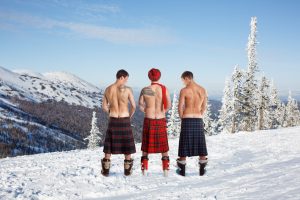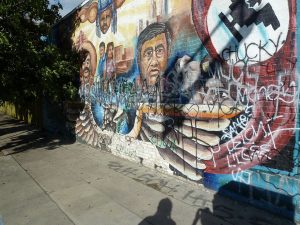![]() Hello everyone! Let me begin this month by congratulating Love Bytes Reviews on 6 years (this month!), and on the successful and very fun launch party for their new Facebook group, Love Bytes Lovers. I got to guest host/takeover for a half hour last night; it was great fun, touched base with friends and made new ones, and got more-fun-than-usual promo out of the deal. It’s still going on today, so hop over there if you read this soon and want to join in. Fun, info, book-talk, and prizes to be had. (My giveaway of a $20 Amazon GC is still going on until midnight EDT. Chance #1, Chance #2. Chance 3 is a post I can’t link here, but you can get that 3rd entry by joining my group, Sylvre Linings! If you miss the contest, you can still enjoy the posts, comment, and of course you are welcome to my upbeat, good news, Sylvre Linings group.)
Hello everyone! Let me begin this month by congratulating Love Bytes Reviews on 6 years (this month!), and on the successful and very fun launch party for their new Facebook group, Love Bytes Lovers. I got to guest host/takeover for a half hour last night; it was great fun, touched base with friends and made new ones, and got more-fun-than-usual promo out of the deal. It’s still going on today, so hop over there if you read this soon and want to join in. Fun, info, book-talk, and prizes to be had. (My giveaway of a $20 Amazon GC is still going on until midnight EDT. Chance #1, Chance #2. Chance 3 is a post I can’t link here, but you can get that 3rd entry by joining my group, Sylvre Linings! If you miss the contest, you can still enjoy the posts, comment, and of course you are welcome to my upbeat, good news, Sylvre Linings group.)
Research is on my mind! And on my PC, my phone, scratched on every piece of paper within reach. Recently, as I’ve mentioned, my co-author Anne Barwell and I have been pushing to finish our Scottish historical fantasy romance, The Harp and the Sea.  We’ve got to the self-editing phase and over the last several days I’ve been doing that (done for now, phewf). Even at this stage, I find myself checking and rechecking research I’ve already done, and coming up with new questions I’ve got to get accurate answers to—even though it’s a magical world, the setting and the relative real world facts have got to be as right as we can make them! The most challenging road this has taken me down in the last few days is figuring out the value of a double fistful of precious stones—diamonds, rubies, emeralds, sapphires—in or around 1745. The answer is a hell of a lot, just like the answer in 2019, lol. But to get there I searched through scholarly documents and essays on the history of jewels, charts about size and weight, measurement and currency conversions, and more. And then I had to get my teen grandson to help me with some algebra. (What can I say, I’m rusty on that stuff.)
We’ve got to the self-editing phase and over the last several days I’ve been doing that (done for now, phewf). Even at this stage, I find myself checking and rechecking research I’ve already done, and coming up with new questions I’ve got to get accurate answers to—even though it’s a magical world, the setting and the relative real world facts have got to be as right as we can make them! The most challenging road this has taken me down in the last few days is figuring out the value of a double fistful of precious stones—diamonds, rubies, emeralds, sapphires—in or around 1745. The answer is a hell of a lot, just like the answer in 2019, lol. But to get there I searched through scholarly documents and essays on the history of jewels, charts about size and weight, measurement and currency conversions, and more. And then I had to get my teen grandson to help me with some algebra. (What can I say, I’m rusty on that stuff.)
Another research challenge with this book is history. Oh, yes, there are documents out there, but when you’re talking about the Scottish Highlands and the Hebrides, there are some pretty big loopholes. First, not really all that much is readily available to the non-scholar about the goings on in those places, and what is available is often biased, or even revised by history’s “winners,” in this case Protestant England. The main outlines are known, of course, but the question of time is a double factor when you also need to research the facts of place. Because, right, the way it looks now isn’t necessarily the way it was then. So yes, lots of research, a dash—no, a few grains—of poetic license, and we hope we’ve got a credible picture of Scotland in 1745, overlaid with a terrible but beautiful magic.
Interestingly, the problem of portraying place accurately can be a challenge even when dealing with a contemporary setting in a well-populated area of the Western World. Even a place where an author grew up. Do I know Los Angeles county? Yes, but I know it from a few decades ago. Has it changed? Yes. Or no. Depending. So many tools are available at my fingertips—images, blogs, news articles, and the wonders of Google Street View. But even those can be misleading because things can change overnight. In the Vasquez and Harrison series, coming up early next year from Changeling Press, the books in the middle happen in large part in LA County—centered in Boyle Heights.

All that said, research is a hell of a lot of fun. Yes, it’s work, and yes it can be frustrating, but I love learning these things I would never have cause to even question if it wasn’t for the simple fact of being a writer. One more reason that I love what I do!

That’s it. That’s all I’ve got for this month, or at least all I have time for. Thank you so much for reading. Please comment as you wish, if you wish—I’ll do my best to get back to you. Thanks to Love Bytes for hosting me. See you next time!


Thank you for sharing. I always think researching can be a daunting task because there is so much info out there and sometimes you can’t use everything you find and then you have to fact check. Appreciate the post and your process.
You’re right, H.B. Daunting and confusing, sometimes I feel like I’m chasing my tail! Thanks for reading and sharing your thoughts.
I love doing research. You can do some amazing things all in the name of research.
True, Debra. It’s a little addicting too. Thanks for reading and commenting!